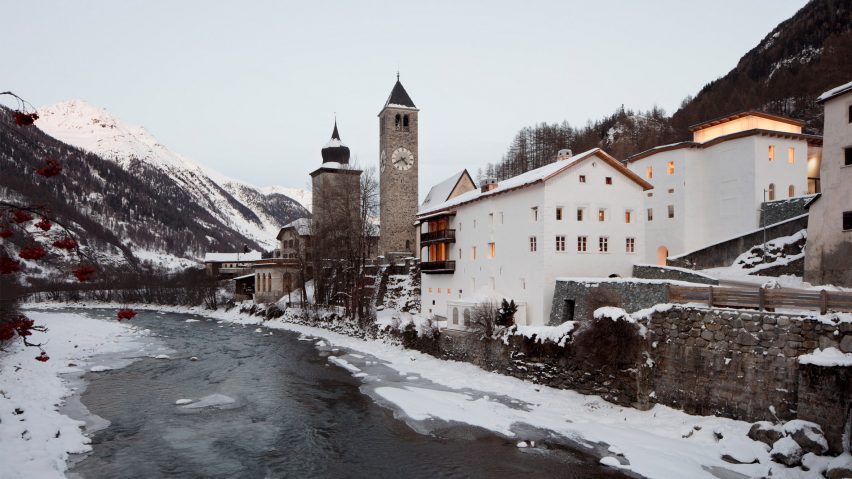
Muzeum Susch in the Swiss Alps has galleries excavated from mountainside
Chasper Schmidlin and Lukas Voellmy have excavated into a mountain, and restored a 12th-century monastery in the Swiss Alpine town of Susch, to create an art museum.
Muzeum Susch occupies the remains of a monastery that was established in 1157 on a sloping site next to a river in the Engadin valley, which is on the route of the ancient pilgrimage from Rome to Santiago de Compostela.
The Swiss architects created exhibition spaces in the restored historic buildings and the grotto-like underground spaces, as well creating a tunnel to connect buildings on the site.
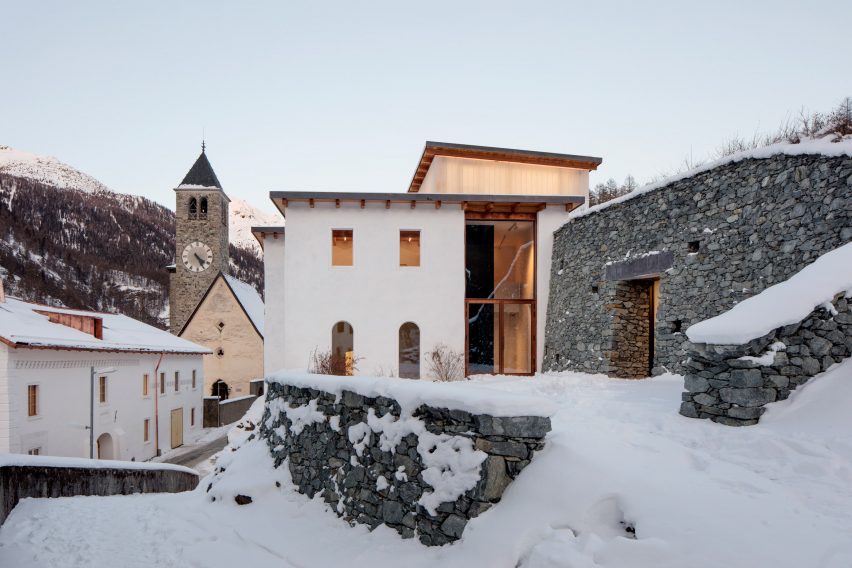
The monastery has been renovated and repurposed several times over the centuries, and in the 19th-century it was turned into a brewery situated above a mountain spring.
Schmidlin and Voellmy collaborated on the transformation of the historic site for the museum, founded by Polish entrepreneur Grażyna Kulczyk, which aimed to maintain the character of the original structures while creating spaces appropriate to their new purpose.
The buildings are protected by local Cantonal Historical Preservation Law, so it was essential to preserve the structures in their original state and perform the main alterations internally.
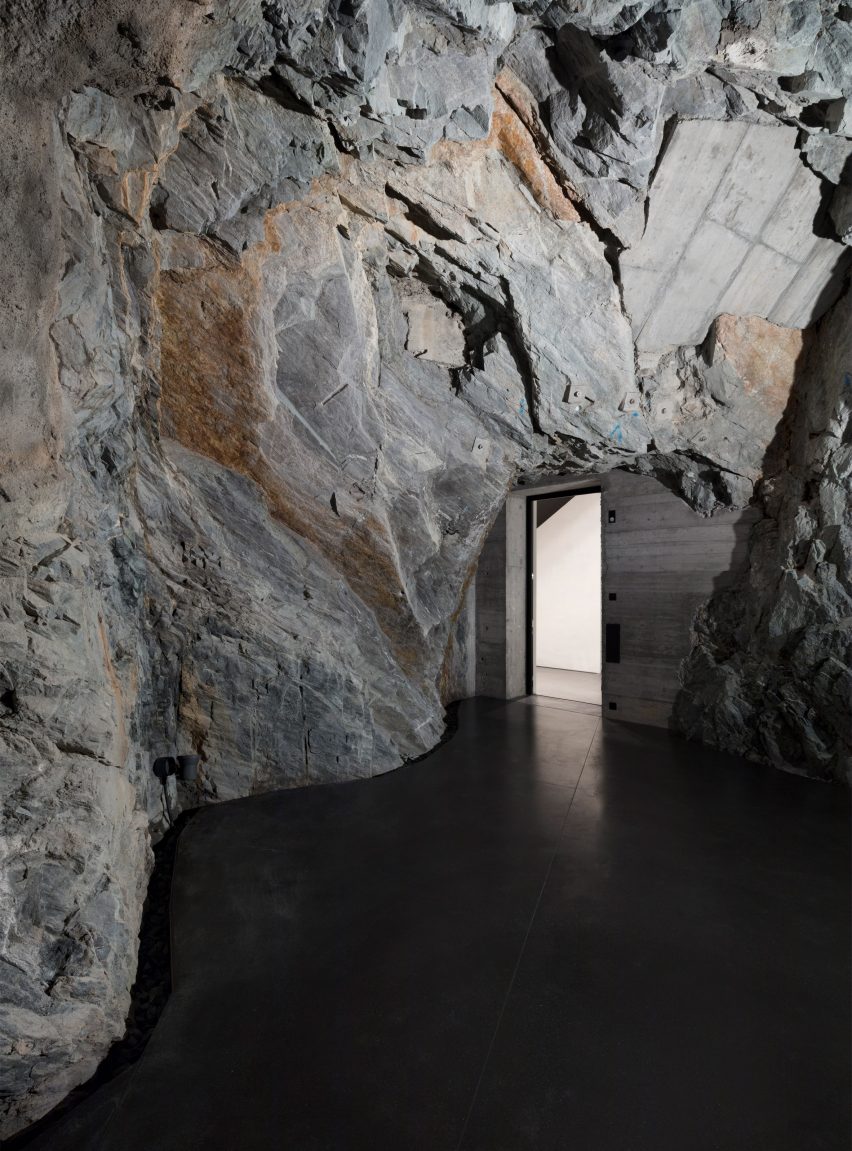
Additional exhibition space was created by excavating down into the mountainside, while a tunnel was created to connect buildings that are on either side of an existing road. Explosions carried out over a period lasting more than a year shifted 9,000 tonnes of rock to create the new rooms and tunnel.
One of the first spaces visitors encounter is a natural rock grotto that was historically used for cooling and storing beer. The space is intended as a gallery for site-specific artist commissions.
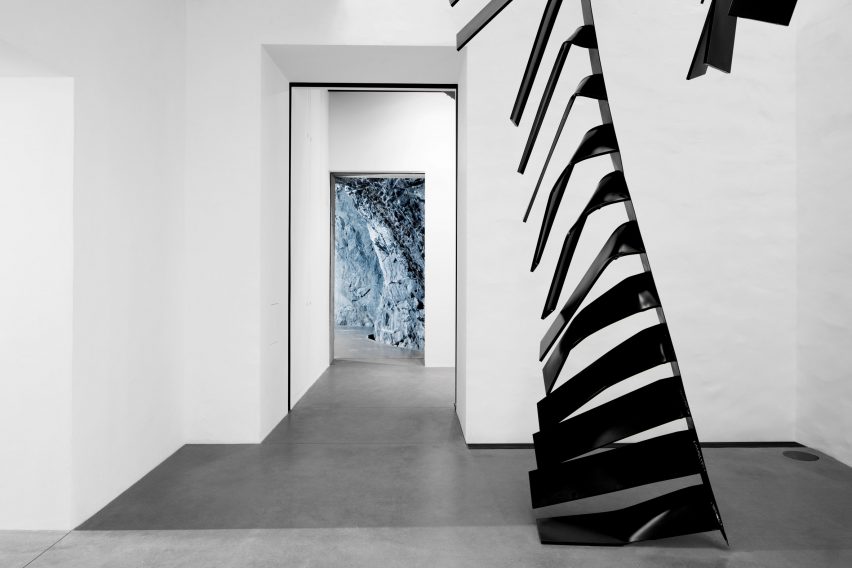
The brewery building has been renovated to provide 1,500 square metres of exhibition space. Rooms are arranged around the original central cooling tower, which was extended four metres into the ground to create a total height of 17 metres.
The tower is now topped with a lantern-like glazed extension and provides a naturally illuminated exhibition space for site-specific work.
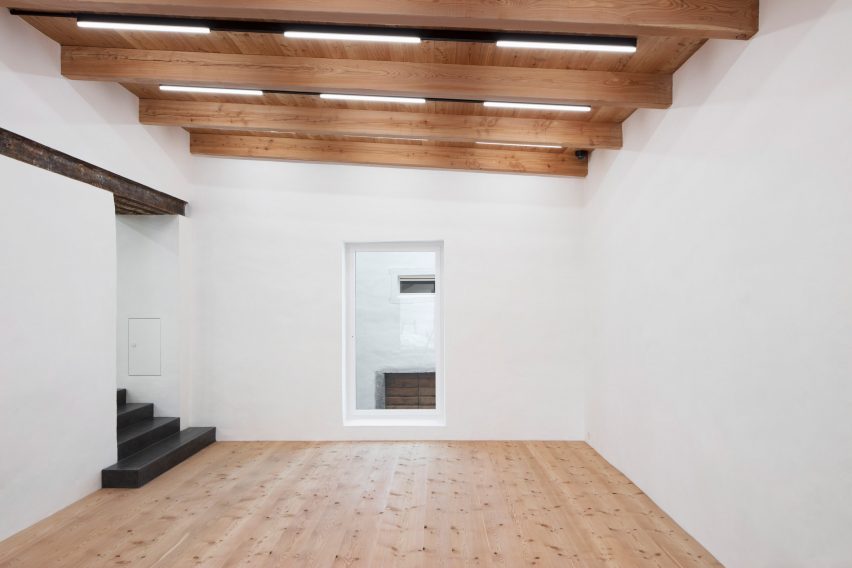
"It was clear to us that this was a space with huge potential, and should form the 'core' of the museum," said the architects.
"Where other museum buildings may have a grand staircase as a focal architectural feature, this vast tower punctuates all storeys of the building and now houses one of the first site-specific artist commissions: a monumental steel structure by Monika Sosnowska."
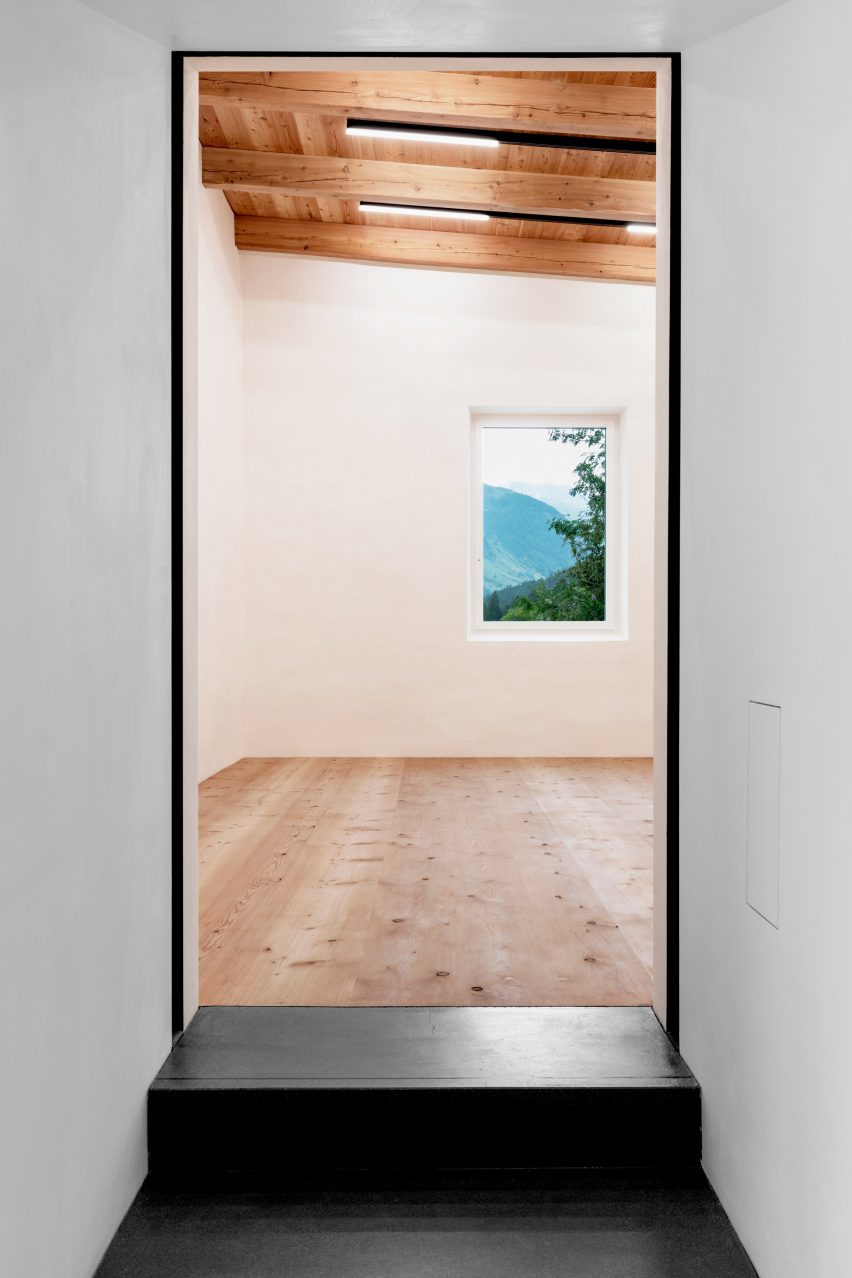
Throughout the project, materials from the local area are used to ensure the building feels connected to its setting. Parts of the excavated stone walls remain on display within some of the spaces.
Rock fragments from the excavation process were processed and mixed with sand from the Flüela Pass river to form the terrazzo flooring within the galleries. Wood sourced from local forests is used for flooring elsewhere, as well for the wood-panelled cloakrooms.
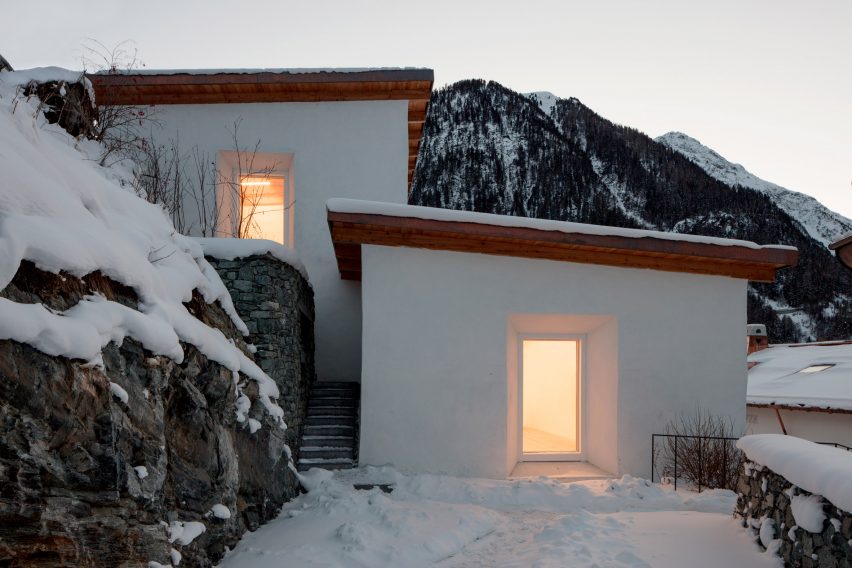
Landscaping by collaborator Günther Vogt forms an important part of the project, which attempts to consolidate the historic boundaries of the site and its relationship with the surrounding context.
Existing stone walls were restored and supplemented by additional, lower walls constructed using stones taken from the river to form a series of terraces that can be used in the summer months.
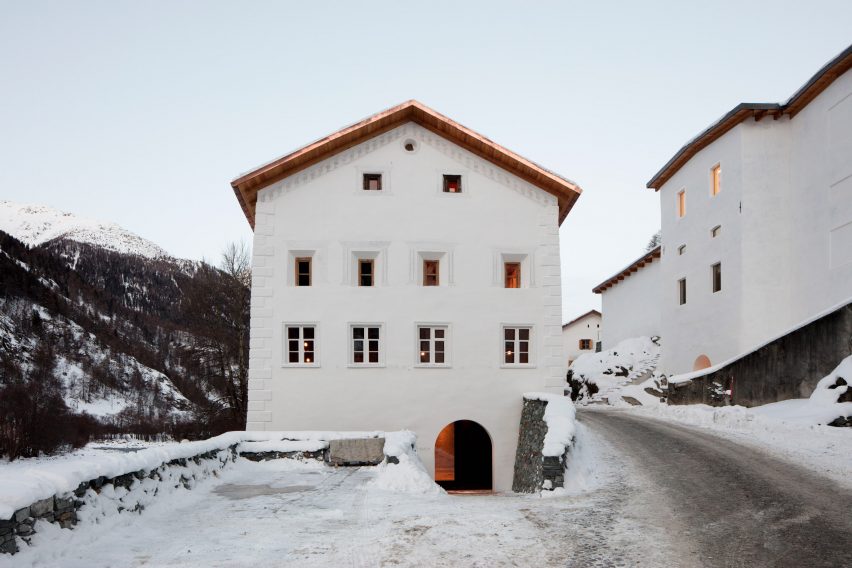
Stones of varying colours were cut into blocks of different sizes and thicknesses, before being stacked to form walls that express the site's natural history and evolution.
Digging deeper is an ingenious solution for architects designing galleries for sensitive sites. In China OPEN Architecture built cave-like art galleries into dunes to save the sensitive ecological site from development, and in Denmark BIG carved channels to create a museum next to a second world war bunker.
Photography is by Conradin Frei.
Project credits:
Project lead: Chasper Schmidlin & Lukas Voellmy
Team: Pascal Schneuwly, Andrea Steiger, Larissa Müllner, Lisa Mäder, Henrik Månsson, Amelie Mai Nguyen, Hubert Holewik, Sandra Sánchez Gañete, Nadinka Guscetti, Roger Berchtold
Civil engineer: Jon Andrea Könz s.c.r.l. Dipl. Ing. ETH SIA
Light engineering: Charles Keller
Sanitary engineering: Jürg Bulach
HVAC engineering: Andreas Kalberer/Marcel Achermann
Elektro engineering: Capaul Engineering
Geologist: Andreas Handke